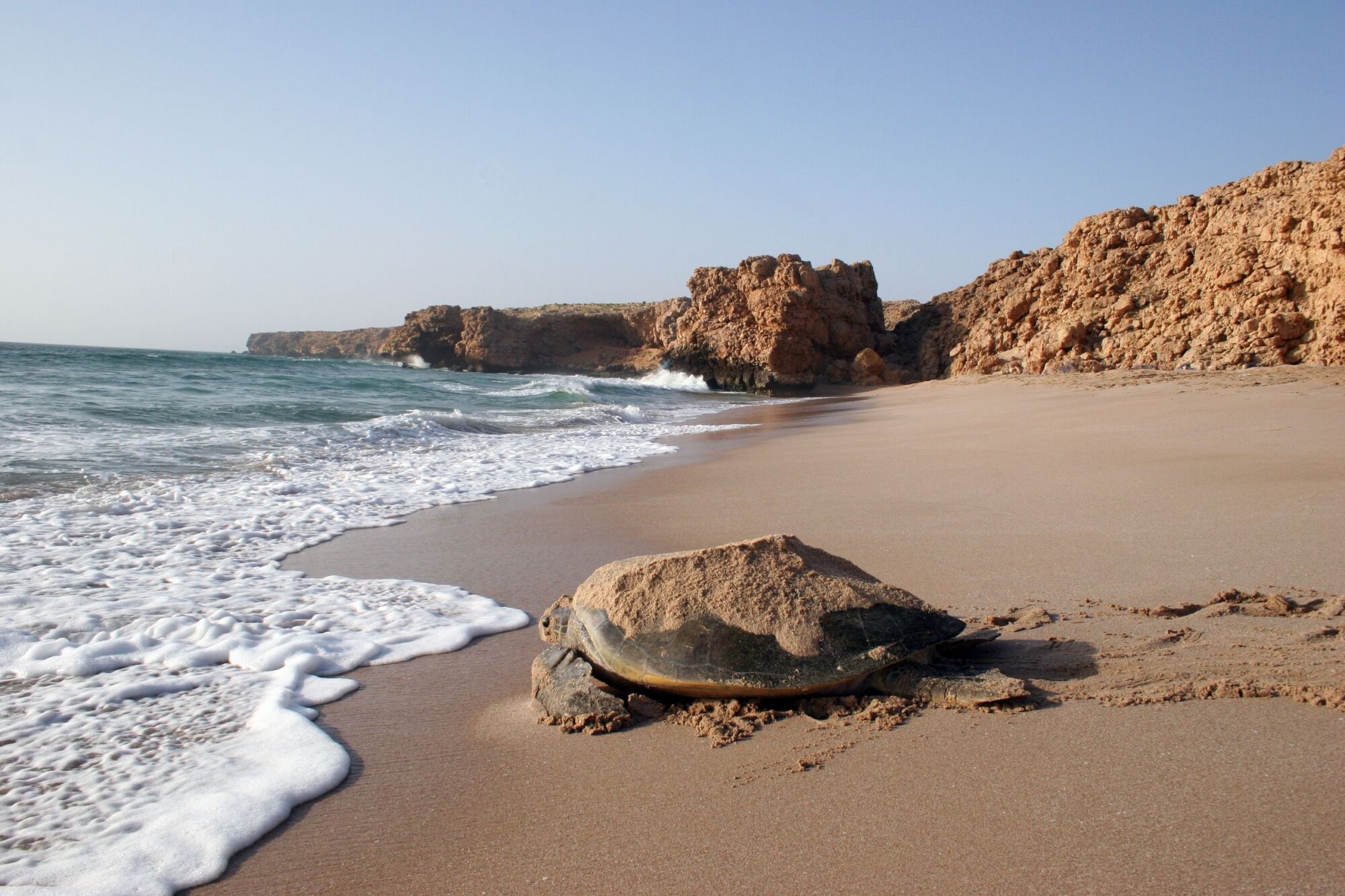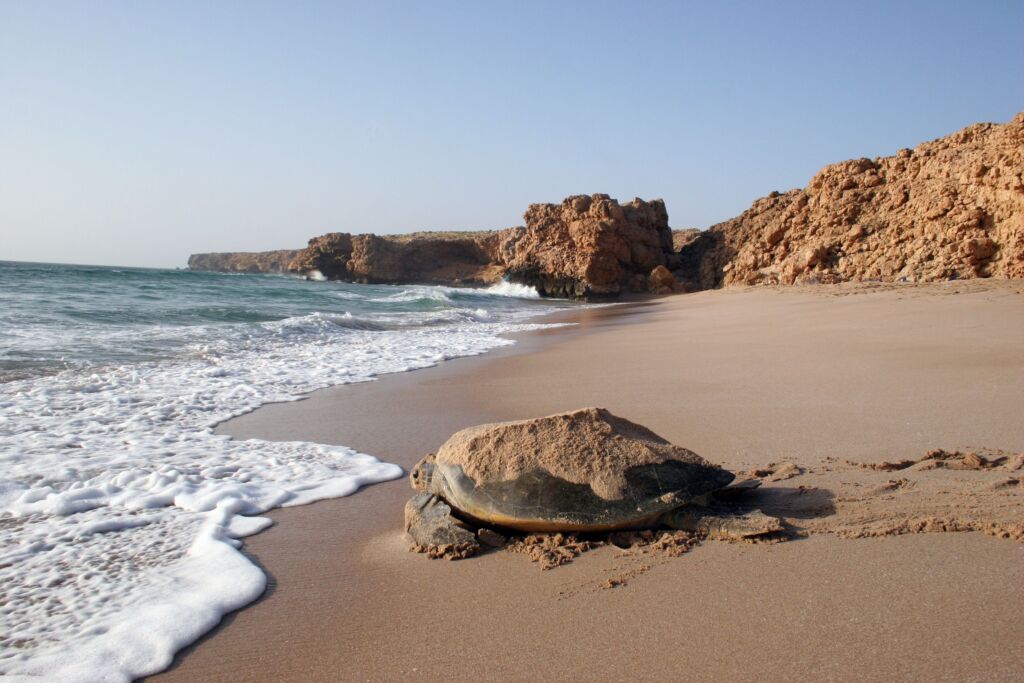Страна:
Регион:
Значение:
Время визита:
Описание:
This coastal area is one of the most important turtle nesting sites in the world and helps to preserve and protect the Indian Ocean sea turtle population. Here you can see turtle nests along the beach and watch the little turtles make their way to the ocean. Green turtles travel hundreds of miles across the ocean to reach their desired beach. Mating takes place in the sea, and then the females come ashore and begin to dig holes in the sand where they lay 100–200 eggs. The turtle hides its clutch under the sand to protect it from heat, direct sunlight and predators. After 40–72 days, the baby turtles hatch from the eggs. They break the shell with their egg tooth, crawl out and start working their flippers with all their might to get to the water faster.
The green sea turtle, also known as the soup turtle (Chelonia mydas) is the largest of all sea turtle species. It got its name “soup” because of its tasty meat and the turtle soup that was made from it. At the beginning of the 16th century, while crossing the Caribbean Sea, Columbus was amazed by the giant herds of these turtles, which were so abundant that sometimes it was extremely difficult to navigate a ship through the almost impenetrable mass of these turtles. Now it is difficult to find even one turtle in these waters. Now hunting for it is prohibited by the laws of most countries.
In order to preserve the turtle population, the government of Oman declared a large area along the coast a protected area. Ras Al Jinz, located on the border of the Gulf of Oman and the Arabian Sea, is part of this reserve.
Turtles come ashore only at night, so excursions are held from 9 pm to 4 am. Bright light scares turtles, and they can, without going ashore, free themselves from eggs in the water (and all the offspring will die). Therefore, there is no lighting along the road almost from the very Sur. At one time, a turtle lays up to 120 eggs. After 2 weeks, she makes another clutch. And so on 2–3 times per season. After which the turtle rests for 3 years and recuperates by swimming in the Indian Ocean.
To lay eggs, the turtle first digs a large hole with its front paws, then digs a hole for the eggs with its back paws. After laying eggs, it fills the hole with sand and makes a false hill nearby to mislead foxes, wolves and stray dogs.
After the turtles hatch from the eggs in a couple of months, they have to pass their first test in life, overcome an obstacle course and run to the sea faster than a seagull or crab can eat you. About 5% of turtles are born dead, 20% of eggs are eaten by foxes, 30% of hatched turtles are eaten by seagulls, 40% by crabs, only about 2% of turtles survive. The chances of baby turtles surviving are low: only one or two out of a thousand will survive. If they are lucky, they will return to the same beach in 25 years.
Категории:
Тэги:
Метки:
Темы:
Зачем посещать:
Интерес:
Физподготовка:
Лучшее время:
Доступ:
Roads:
Facilities:
Rates:
OMR 3 (adults), OMR 1 (children)
Details:
Escorted tours daily at 21:00 reservations recommended
Clothing:
for the season
Connection:
Ok
- How to Get Around Australia
- Macau
- Derbent (Dagestan, Russia)
- Falkland Islands
- North Coast 500: грандиозный маршрут по Северному нагорью Шотландии
- Travel to Cambodia
- Indians
- Mammoths and travel: where to see habitats, traces and digs, and museums
- Niger
- Georgia
- BMW: путешествие по следам легендарного бренда
- Honduras
- Kenya Nchi Yangu Song
- Scythians
- Panama
- Turkmenistan
- 9 Reasons Why People Love to Travel to Other Countries
- Great Plains (USA)
- Liechtenstein
- Kamchatka


